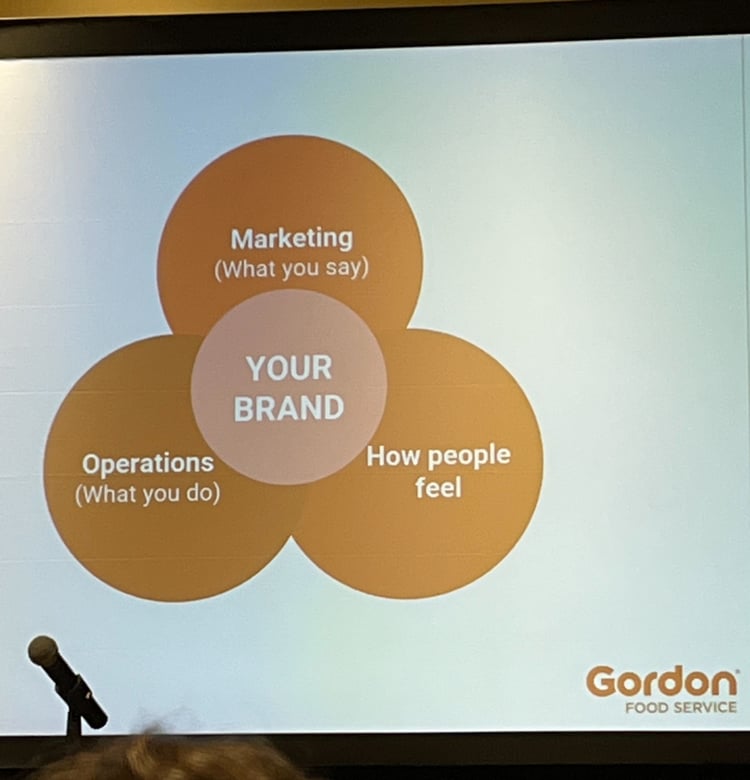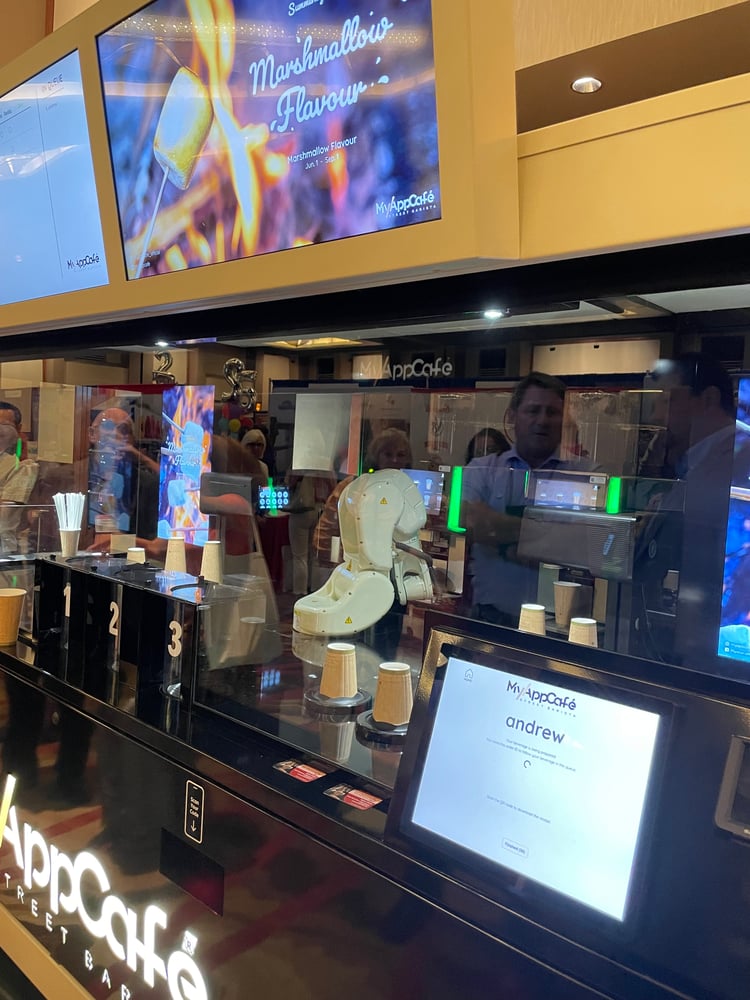What’s the #1 thing you want to fix, update, or focus on this coming year in your healthcare foodservice operation?
If you said anything about technology, branding, or more, you’re not alone. Last week, some of us Nutrislicers attended AHF 2022 in sunny Scottsdale, Arizona, and we learned about some of the top healthcare foodservice trends at the top of operators’ minds for the coming year.
These are the five trends we discovered:
Branding
In one session hosted by Gordon Food Service, the audience was asked, “Has your operation branded itself yet?” and “Why would customers/guests want to eat with you?” Clearly, there’s no simple answer to these questions, but they were meant to get directors and operators thinking about how they brand their foodservice experience.
Branding is a complex mixture of tangible (ex.: logo, colors, floor layout, etc.) and intangible (ex.: people’s perceptions/feelings about you). But overall, branding helps differentiate your offerings, and increases participation and revenue by creating consistency in guest expectations. This goal is exactly what several foodservice operators were talking about before and after the Gordon session.
If you’re hoping to improve your operation’s “image” this year, start by evaluating whether or not your current mission and offerings are aligned to your brand, or the brand you wish to have. You can also explore and validate your thoughts by conducting surveys and interviews. And make sure your current partners, technology-related or not, are on board with your branding needs.

Digital experiences
Speaking of branding and technology, healthcare foodservice teams were also interested in creating a strong, consistent digital experience. This goal is closely tied to your operation’s branding because the way someone interacts with you impacts their perception of your brand.
It’s little surprise then that operators were looking for technology partners to help them up their digital customer experience game. There was lots of talk about giving doctors, nurses, and hospital staff an ordering solution, for example, as well as extending this option to retail/gift shop locations and patient bedsides (outside of their medically-required nutrition plan).
Digital needs like this are our bread and butter, and they’re also why we attend AHF every year. Our cloud-based platform and solutions (menus, ordering, signage, and food labels) help operators provide an easy, amazing digital guest experience so they can focus on what they do best: delivering culinary excellence.
Upscale tech
Another topic that a lot of healthcare foodservice operations were buzzing about at AHF this year was advanced, upscale technology. If it had the word “automated,” “vending,” or “robot” in it, operators wanted to learn more about it!
During the tradeshow day, several companies showed off their high-tech solutions to solve operators’ pain points, specifically staffing issues. Do your nurses want healthy food options? Try this automatic smoothie machine or this custom salad dispenser. Need to open another coffee joint? Check out a coffee-making robot! Thinking of opening a grab-and-go location? Some companies can offer you an easy scan-and-go solution.
According to what we heard, the biggest drawback to these upscale tech solutions is the price tag. However, they’re still on operators’ minds as potential investments because they offer long-term improvements to efficiency and a larger variety of offerings with little-to-no operator effort.

Resilient tech
If you couldn’t already guess, one of the most talked-about healthcare foodservice trends was a general focus on any sort of technology that can help operators become more resilient while staying up-to-date and transparent with their offerings. This was top-of-mind due to today’s current supply chain and labor shortages.
There was plenty of discussion around using technology to get ahead of food shortages by working with food distributors and communicating supplies to dispersed locations. Operators also wanted technology that could help them ensure all foods (including nutritional and allergy information) are up-to-date for what’s being substituted for both patient and retail services, since different ingredients can greatly affect people’s health and safety if not properly identified/avoided.
The best way to stay accurate and resilient in difficult times is to have one source of truth for all your menu information that communicates updates in real-time to all your digital platforms (online menus, ordering app, digital signage, digital food labels, etc.). If you’re interested in this tech, let us know.
Retail evolution
Finally, operators at AHF were eager to rethink how they approach their retail offerings. This was mainly due to concerns about labor shortages, supply chains, budgets, and competitors, but also because certain retail locations (like gift shops) historically don’t perform well for them.
One AHF session provided a case study from Geisinger medical center in Pennsylvania. The health system decided to launch an inviting space called a “health hub” that included high-quality retail options and amenities for employees, cancer patients, and their visitors. Geisinger also worked to bring celebrity chef-branded concepts to its retail options, like a fast casual offering called Root & Sprig from Tom Colicchio.
Overall, operators in the healthcare industry are looking for compelling retail experiences that, in many ways, tie together all the previous trends we just covered! Well-branded, tech-driven retail options with strong digital experiences will help operations stay competitive and innovative for years to come.
We’ll definitely watch these trends as they evolve over the next year in healthcare foodservice. Which are you most excited about for your operation?
See how digital labels could help your healthcare foodservice team!
